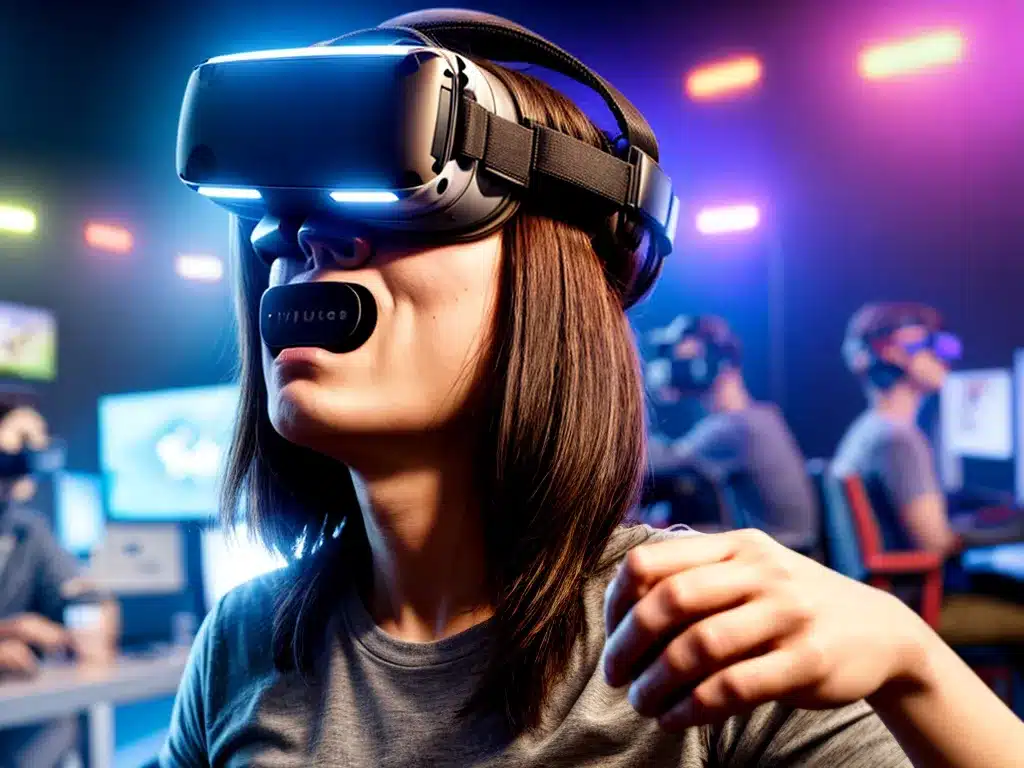
How Virtual Reality is Revolutionizing the Gaming Experience
Introduction
Virtual reality (VR) is transforming the way we play, experience, and think about video games. After decades of hype, the technology has finally reached the point where VR gaming is viable and affordable for the mass market. As a gamer, I’m thrilled by the new level of immersion and realism that VR brings to gaming. In this article, I’ll explore how VR is revolutionizing gaming by enabling new genres, bringing a heightened sense of presence, and pushing the limits of interactive storytelling. There is no doubt that VR gaming is here to stay and will only continue to evolve in exciting ways.
Enabling New Genres of Games
One of the most exciting aspects of VR gaming is that it opens the door to entirely new genres of games. Experiences that we could previously only dream of are now possible with the aid of VR headsets and motion controllers. For example, rhythm games like Beat Saber let you slash through cubes with light sabers in sync to music. The feeling of wielding weapons in VR is simply unmatched in terms of visceral thrills.
VR also enables interesting hybrid genres, like VR horror games that use psychological terror and jump scares right in your face. Titles like Resident Evil 7 and Five Nights at Freddy’s VR are downright terrifying when experienced up close in VR. The most mundane objects and environments can be imbued with dread when they surround you completely in VR.
Some other genres that have found a natural home in VR include flight simulators, meditative experiences, fitness games, sports games, and so much more. VR provides the perfect medium for activities that are difficult to replicate in the real world. The possibilities are wide open for developers to come up with novel game concepts.
Heightened Sense of Immersion and Presence
More than anything else, VR aims to make you feel truly present in a virtual world. With a VR headset and headphones on, you are visually and audibly cut off from the real world. This allows you to become fully immersed in the fictional setting. Through your interactions, you gain a sense of embodiment in the game world that you simply can’t get from traditional screens.
The advanced motion tracking in modern VR headsets also contributes to immersion. As you naturally look around and use motion controllers, your virtual body accurately mirrors your real-world self. This creates intuitive, lifelike interactions for activities like wielding weapons, casting spells, or manipulating objects.
Subtle details also enhance presence in VR. For example, being able to peek around corners or lean around cover reinforces the feeling that you are physically inhabiting the game world. The use of spatialized 3D audio makes sounds feel directionally real, as opposed to simply coming through stereo speakers.
Pushing the Limits of Interactive Storytelling
VR’s strengths at immersion and interaction lend themselves perfectly to story-focused gaming. Developers have only scratched the surface of what interactive storytelling in VR can look like.
Narrative games like Lone Echo and Asgard’s Wrath place you at the center of an evolving story. Your choices and interactions feel more consequential when you are an active participant as opposed to just a passive viewer. Environments also take on more significance when you can freely explore every detail up close. It’s no longer enough to just read about a game world’s lore; VR allows you to inhabit and interact with it directly.
The intimate perspective of VR is ideal for dialogue-driven games as you can feel the emotional proximity of having a conversation with a virtual character. Star Wars: Tales from the Galaxy’s Edge leverages this to make you feel like part of a living Star Wars story. The possibilities for emergent, unscripted storytelling are also exciting. Games like VRChat show what’s possible when players collectively improvise and roleplay scenarios.
Conclusion
After spending hundreds of hours in VR, I firmly believe this technology represents a seismic shift for gaming. The unmatched sense of immersion and interactive possibilities set VR worlds apart from anything we’ve experienced on screens before. While there are still challenges to tackle, from motion sickness to the social acceptance of wearing headsets, the trajectory of VR gaming is clearly aimed at the future. I can’t wait to see how developers continue to surprise, delight, and immerse us in the coming years. The revolution has only just begun.












